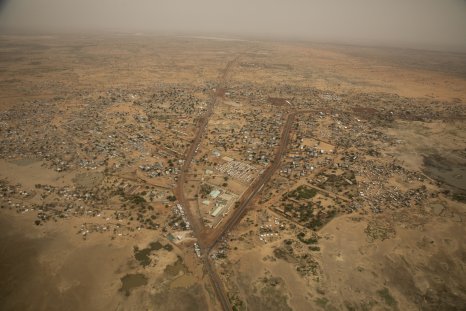China's long-running territorial dispute with the Philippines, a U.S. defense treaty ally, in the South China Sea has expanded to a new front in recent months.
The Chinese coast guard announced on Monday that two Philippine coast guard ships, the BRP Cabra and BRP Cape Engano, had "intruded" into waters off disputed Sabina Shoal in the Spratly Islands.
The incident marks the third maritime confrontation between the two nations in a week. On Sunday, video footage surfaced showing a collision between a Chinese coast guard cutter and a Philippine fisheries bureau vessel, which Manila stated was distributing food and fuel to local fishermen in the area.
Sabina Shoal, situated approximately 75 miles from the Philippine province of Palawan, is one of the most contentious features in the Philippines' territorial dispute with China. The shoal lies within the Philippines' exclusive economic zone (EEZ), granting the country exclusive rights to natural resources under international maritime law.
Chinese ships "blocked and surrounded" the Cabra and Cape Engano, according to photos and footage shared by a reporter from The Philippine Inquirer on X (formerly Twitter) on Monday evening.
On Sunday, Chinese maritime forces honed in on a Philippine fisheries bureau vessel the BRP Datu Sanday as it was delivering supplies to local fishermen near Sabina Shoal.
The Chinese coast guard deployed water cannons, blasted their horns, and engaged in unsafe maneuvers resulting in the collision, according to the Philippines, which condemned the actions, calling on Beijing to "halt these provocative actions that destabilize regional peace and security."
The incident forced the Philippine vessel to abandon its mission after suffering engine failure, Manila said.
China accused the Philippines of planning to use the fisheries bureau vessel to resupply the BRP Teresa Magbanua, which has been stationed in the shoal's lagoon since April.
"For some time now, the Philippine side has frequently dispatched coast guard vessels and official vessels to forcibly intrude into the waters near Xianbin Reef in an attempt to resupply Philippine coast guard vessels stranded in the Xianbin Reef lagoon for a long time, seeking to achieve a long-term existence," said Chinese Foreign Ministry spokesperson Lin Jian, using China's term for Sabina Shoal, during a regular press conference on Monday.
The Philippines has stated that it deployed the ship after discovering a large amount of discarded corals in the area.
"Beijing's attempt to demonstrate it has a larger muscle, through massing of assets at the shoal including the deployment of one of CCG's monster OPV [offshore patrol vessel], failed to create an impression. Therefore, it amps up the pressure through such behavior to compel Manila to relinquish presence," wrote Collin Koh, a maritime security expert at the S. Rajaratnam School of International Studies in Singapore, on X on Sunday.
Recently, China has intensified its rhetoric, accusing the Philippines of attempting to establish a longer-term presence at Sabina Shoal, similar to its deployment at Second Thomas Shoal, where it maintains a marine outpost on a rusting former tank-landing ship.
China embarked on a major island-building campaign the South China Sea 2010s, including Spratly Islands features such as Mischief Reef.
China has used its artificial islands as "power projection platforms from which to expand its effective control of features within its neighbors' lawful exclusive economic zones," Stanford University-affiliated SeaLight initiative wrote in May.
If China were to succeed in establishing a base at Sabina Shoal, it would be the closest yet to the Philippines, SeaLight pointed out.
The Chinese Foreign Ministry, Philippine coast guard, and Philippine Department of Foreign Affairs did not immediately respond to emailed requests for comment.
Disclaimer: The copyright of this article belongs to the original author. Reposting this article is solely for the purpose of information dissemination and does not constitute any investment advice. If there is any infringement, please contact us immediately. We will make corrections or deletions as necessary. Thank you.



